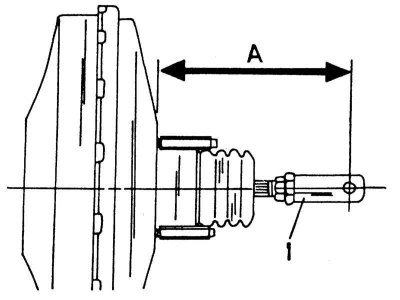1. With the engine off, depress the brake pedal several times until the vacuum is gone from the system.
2. Depress a pedal and start the engine.
3. If the booster works flawlessly, the pedal will drop noticeably down.
4. To remove the brake booster, unscrew the nuts of the four bolts from the passenger compartment after the master brake cylinder has been removed. The following preparatory work must be carried out in order to be able to get to all the fasteners and remove the amplifier.
5. Remove the air filter and control valve bracket next to the brake booster.
6. Release brake pipelines from fastening collars.
7. With the servo control installed, disconnect the pressure sensor plug and remove the steering pump hose clamp.
8. The push rod of the brake booster is connected in the passenger compartment with the brake pedal. Also plug the vacuum hose to the intake manifold. The brake booster must be rotated and tilted when removed, as the space is quite limited.

When installing a new brake booster, you need to set the size "A" by 125 mm due to displacement of the pusher rod (1).
9. Installation of the brake booster is carried out in the reverse order of removal. If the original brake booster and brake master cylinder are installed, no adjustments are required. If one of the parts is replaced, you need to adjust the push rod in the cabin. To do this, measure the distance from the contact surface of the amplifier (where is the brake master cylinder flanged) to the center of the hole in the stem, as shown in the illustration. The size should be 125 mm. Otherwise, loosen the push rod lock nut and unscrew or screw it in.